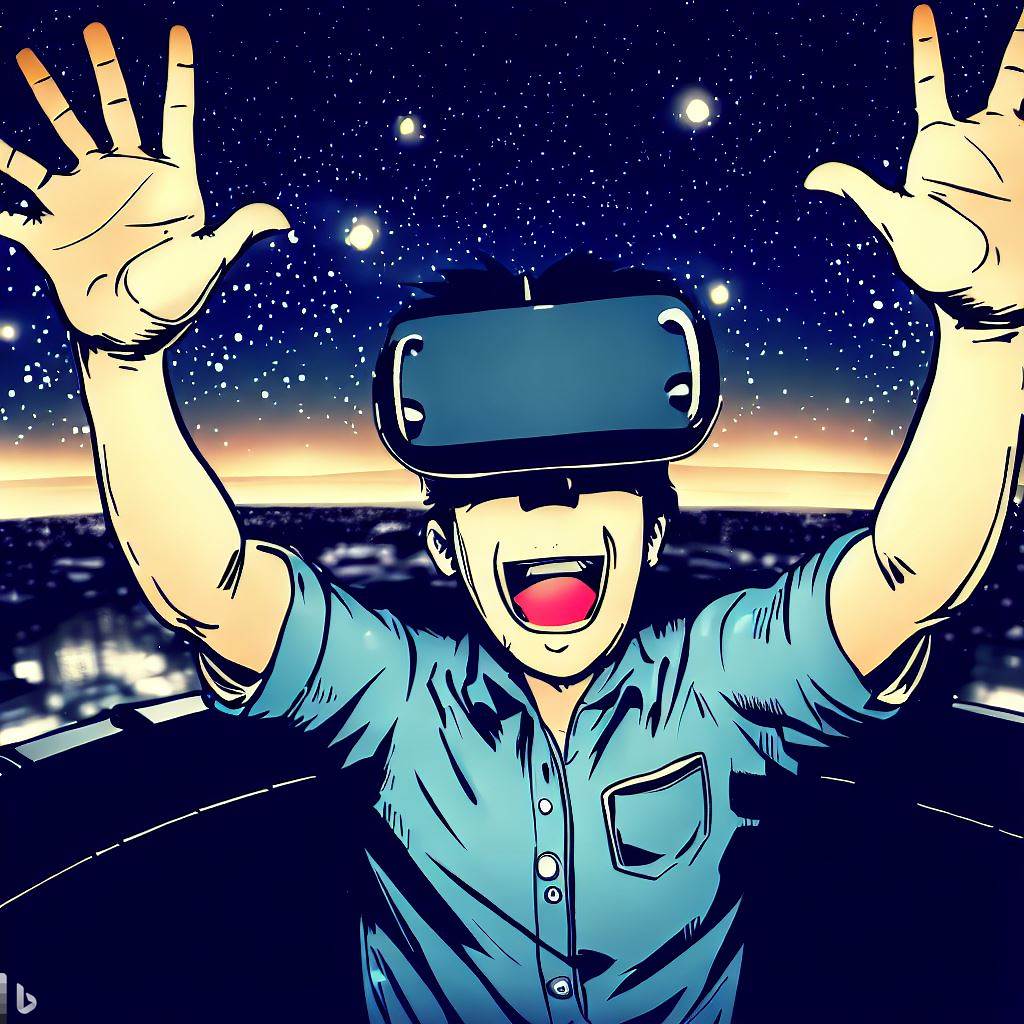VR is already on a rapid growth trajectory, with significant advancements in technology and user adoption occurring in recent years. The industry is poised to skyrocket even further as hardware becomes more affordable and accessible, and as new, immersive content and applications continue to emerge.
Hello there! Hope you’re doing well. In today’s discussion, we’ll delve into the captivating world of virtual reality (VR). We’ll explore the progress of VR technology, the growth of the industry, and attempt to address the pressing question: “Will Virtual Reality Finally Take Off? And if so, when?”
To help you gain a deeper understanding of VR’s potential trajectory, we’ll consider past developments, current trends, and expert predictions for the future. As we embark on this virtual journey together, we’ll analyze and evaluate the factors that could influence the widespread adoption of VR technology.
Are you ready to uncover the secrets behind VR’s success and its potential timeline? Then grab a comfortable seat, and let’s dive into the fascinating world of virtual reality.
A Glimpse into VR’s Past: Understanding the Evolution
If you’re anything like me, you’re probably wondering how we got to this point in VR technology. Well, let me give you a quick rundown. But, if you want a more in-depth exploration, I’ve got you covered! Check out my previous article, When Was VR Invented? The History of Virtual Reality!
From Novelty to Necessity

The journey of VR started as a concept in science fiction, eventually making its way into the real world as a niche technology. Early adopters were limited to labs, universities, and specialized industries, as the hardware was cumbersome and prohibitively expensive.
In the ’90s, the gaming industry dabbled with VR, but the technology was far from perfect. It was, to put it mildly, a work in progress. Fast forward to the 2010s, and VR began its resurgence with the release of the Oculus Rift.
The New Wave of VR Devices
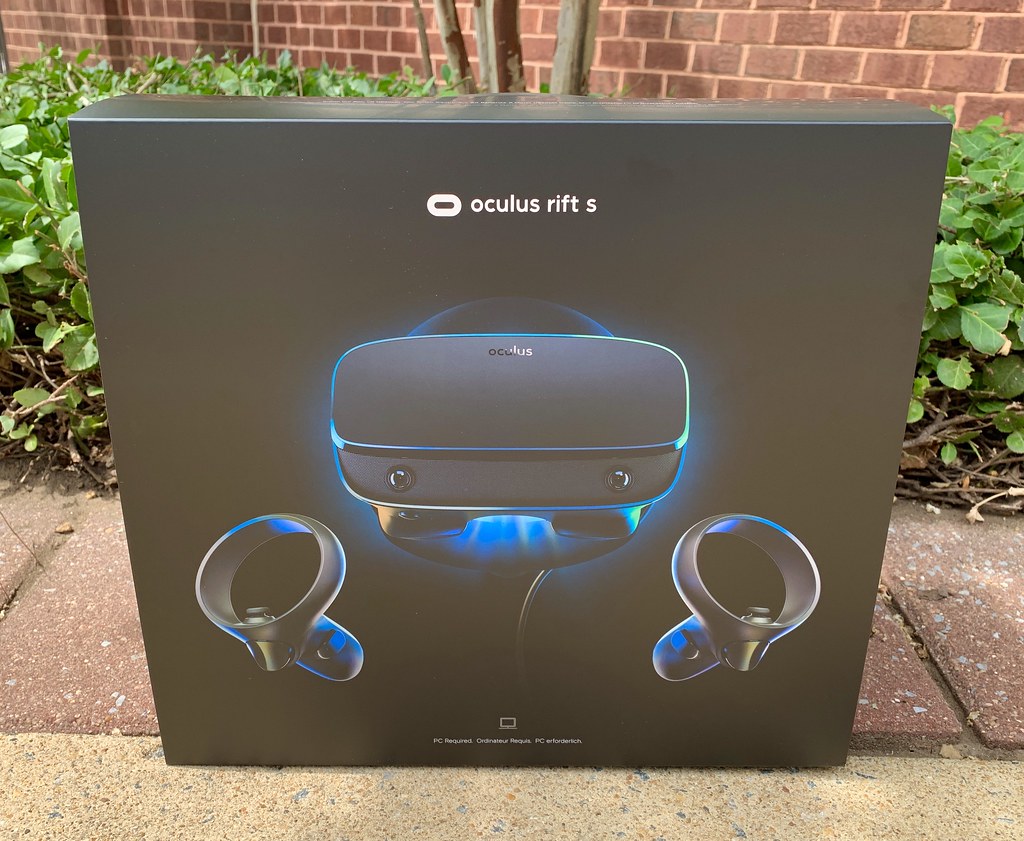
Several tech giants soon jumped on the bandwagon, introducing a range of VR headsets for gaming and entertainment. Some noteworthy examples include:
- Oculus Rift (2016)
- HTC Vive (2016)
- PlayStation VR (2016)
- Samsung Gear VR (2015)
“The best way to predict the future is to invent it.”
Alan Kay
The latest generation of VR devices has come a long way in terms of comfort, affordability, and functionality. We’ve seen a shift towards standalone devices like the Meta Quest, which offer untethered experiences, thus eliminating the need for high-end PCs or gaming consoles.
A Growing Ecosystem
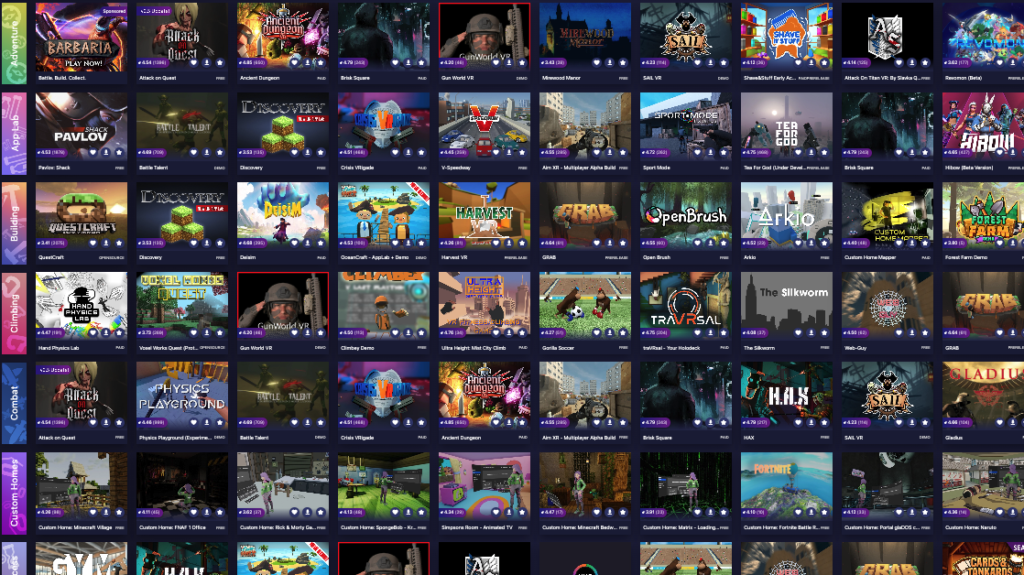
As VR continues to evolve, we’ve seen the emergence of a thriving ecosystem of content, applications, and experiences that cater to a broader audience. From education and training to socializing and virtual travel, VR has expanded its reach far beyond gaming.
In conclusion, the evolution of VR has been a thrilling journey. With each passing year, we’ve witnessed groundbreaking advancements and improved accessibility. But the real question remains: is VR on the brink of mass adoption? Let’s explore this further in the next section.
Current Trends: What’s Shaping the Virtual Reality Landscape
As we delve deeper into VR’s present state, it’s essential to understand the trends that are shaping the industry today. Here are some of the most influential factors driving VR’s growth and potential widespread adoption.
1. The Push for Standalone VR Devices

One of the most significant trends shaping the virtual reality landscape is the push for standalone VR devices. These all-in-one headsets have made virtual reality more accessible and user-friendly, contributing to the growth of the industry.
In the early days of consumer VR, devices were primarily tethered to powerful PCs or gaming consoles. This limited the potential user base, as only those with high-end computers could enjoy VR experiences. Moreover, the cumbersome setup and cable management often deterred potential users from fully embracing virtual reality.
Standalone VR devices, on the other hand, have revolutionized the way we experience virtual reality. By incorporating all the necessary components into the headset itself, these gadgets offer an untethered experience, allowing users to move freely and without the need for external hardware.
Key players:
- Oculus Quest (2019) and Meta Quest 2 (2020): The Oculus Quest series has been a game-changer for the VR industry. These devices offer a high-quality, all-in-one VR experience at an affordable price point, making them popular among consumers.
- Vive Focus (2018): Developed by HTC, the Vive Focus was one of the first standalone VR devices available. It initially targeted enterprise users but has since expanded to cater to a broader audience.
- Pico Neo 3 (2021): This standalone headset, released by Pico Interactive, offers a competitive alternative to the Oculus Quest 2, featuring impressive specs and a growing content library.
The rise of standalone VR devices has not only made virtual reality more accessible but has also helped lower the entry barrier for new users. By offering a more simplified and hassle-free experience, these devices have attracted a wider range of consumers, which is essential for the technology to reach its full potential.
In conclusion, the push for standalone VR devices has played a crucial role in shaping the current virtual reality landscape. As the technology continues to evolve and become even more accessible, it brings us closer to the moment when VR finally takes off.
2. Immersive Social Experiences
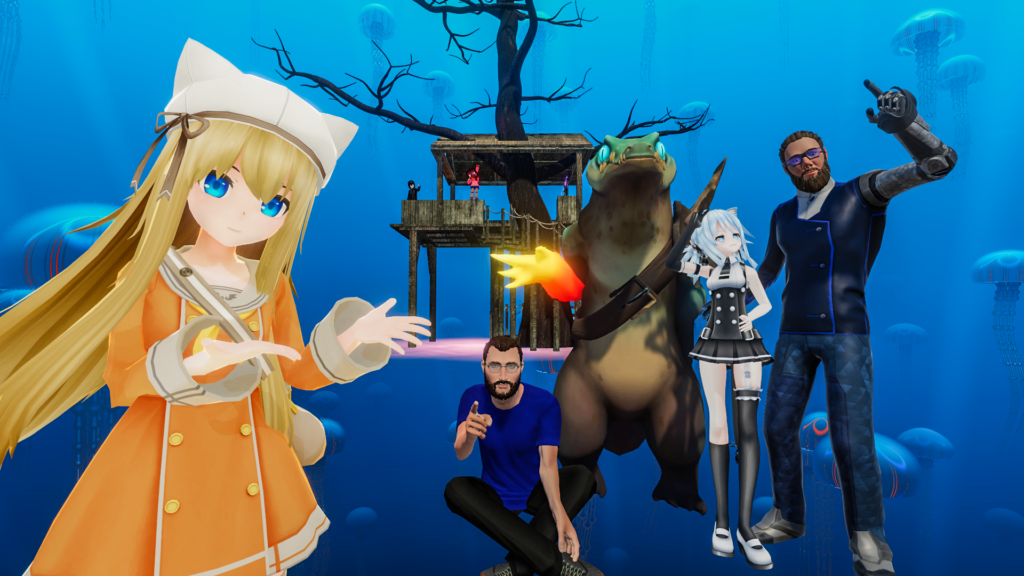
Immersive social experiences have become an essential part of the virtual reality landscape. As the technology has advanced, the focus has shifted from primarily individual experiences to shared, collaborative environments that allow users to interact with others in real-time. This shift has expanded the appeal of VR and contributed to its growing popularity.
Platforms that facilitate these immersive social experiences have gained significant traction. Some popular examples include:
- VRChat: VRChat has emerged as one of the most popular social VR platforms, allowing users to create and customize their avatars, explore user-generated worlds, and interact with others via voice chat. From attending virtual concerts to participating in interactive games, VRChat offers a diverse range of activities for users to engage in.
- Rec Room: This platform is another social VR favorite, blending elements of gaming and social interaction. Rec Room enables users to join or create clubs, play various multiplayer games, and even design their games using the in-app creation tools. It fosters a sense of community, collaboration, and creativity within the virtual space.
- AltspaceVR: AltspaceVR focuses on creating a shared virtual space for users to attend events, engage in discussions, and meet new people. From open mic nights to educational talks, this platform offers a variety of experiences that cater to different interests.
The allure of immersive social experiences extends well beyond just entertainment. As remote work became more commonplace, even before the pandemic, virtual reality started to emerge as a practical alternative to in-person interactions. Numerous companies have been exploring the use of VR platforms for remote meetings, team-building activities, and virtual conferences, offering more engaging and interactive experiences than conventional video calls.
Additionally, virtual reality holds tremendous potential in the realm of education. Educators can harness VR platforms to create engaging, immersive classrooms that allow students from various locations to participate and collaborate in real time. This innovation could potentially revolutionize distance learning and make education more accessible to people worldwide.
In essence, immersive social experiences have become a vital component in the virtual reality landscape. By empowering users to connect and interact with one another in shared virtual spaces, VR has broadened its scope beyond gaming and entertainment. As these social experiences continue to develop and refine, they will play a pivotal role in determining the future success and widespread adoption of virtual reality technology.
3. Advancements in Hardware and Software

Advancements in hardware and software have played a critical role in shaping the virtual reality landscape. With each new development, VR experiences are becoming more immersive and realistic. Let’s explore some key areas of improvement:
Graphics: High-quality graphics are essential for creating convincing virtual environments. As graphics processing units (GPUs) have become more powerful, they’ve enabled richer, more detailed visuals in VR experiences.
Haptic Feedback: Haptic technology has made significant strides, providing tactile sensations that make virtual interactions feel more authentic. From vibrating controllers to full-body suits, haptic feedback adds another layer of immersion to VR experiences.
Motion Tracking: Enhanced motion tracking ensures that users’ movements are accurately replicated in the virtual world. This improvement allows for more natural and intuitive interactions, increasing the overall level of immersion.
Audio: Spatial audio is crucial for creating an authentic VR experience. Advancements in audio technology enable more realistic soundscapes, making it easier for users to become fully immersed in the virtual environment.
User Interface: Intuitive and user-friendly interfaces have made navigating VR experiences more seamless. This ease of use has lowered the learning curve for new users, making VR more accessible to a wider audience.
In conclusion, ongoing advancements in hardware and software have greatly contributed to the evolution of virtual reality. As these technologies continue to improve, we can expect even more immersive and engaging VR experiences, which will play a crucial role in determining the technology’s future success and adoption.
4. Enterprise Adoption: Beyond Gaming and Entertainment

Enterprise adoption of virtual reality has expanded its applications beyond gaming and entertainment, demonstrating its potential to become an invaluable tool in various industries. The versatility of VR has led to its integration in multiple sectors, including healthcare, education, architecture, and more. Let’s take a closer look at some of these applications:
Healthcare: In healthcare, VR is being used for medical training, patient treatment, and therapy. Surgeons can practice complex procedures in a risk-free environment, while therapists can use VR to treat patients with phobias or post-traumatic stress disorder through exposure therapy.
Education: The immersive nature of VR has made it an attractive tool for educators. VR can be used to create interactive lessons and simulations, allowing students to explore historical sites, conduct virtual science experiments, or even learn new languages in a more engaging and effective manner.
Architecture: VR has transformed the way architects work, enabling them to create virtual walkthroughs of their designs. This allows clients to visualize and explore proposed spaces before construction begins, leading to better design decisions and potentially saving time and resources.
Training and Simulation: Industries such as aerospace, automotive, and manufacturing are leveraging VR for training and simulation purposes. By creating realistic virtual environments, employees can gain hands-on experience and practice complex tasks without the risks associated with real-world scenarios.
Marketing and Retail: Virtual reality is also being used in marketing and retail, offering customers unique shopping experiences. From virtual product demonstrations to virtual store layouts, VR can help businesses engage with their customers in a more immersive way.
5. The Impact of 5G Connectivity
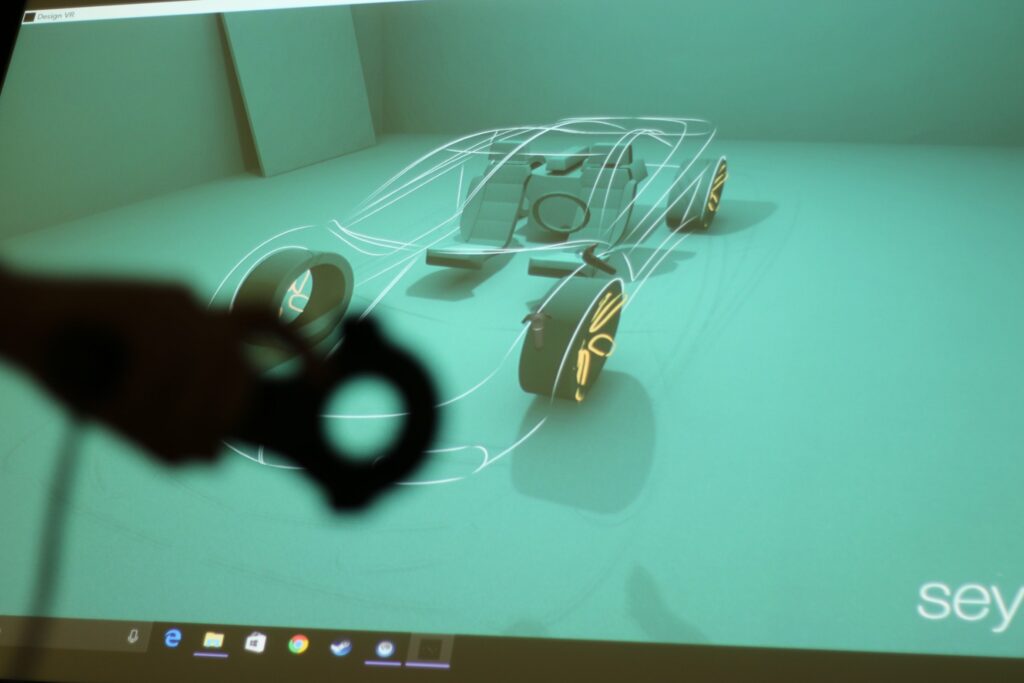
The arrival of 5G networks has opened new doors for VR, thanks to reduced latency and enhanced data transfer speeds. This development allows for more seamless VR experiences, particularly in cloud-based platforms.
“Virtual reality represents a new frontier that will transform the way we experience, create, and share content.” – Mark Zuckerberg
In a nutshell, the current trends in the virtual reality landscape showcase a promising future for the technology. With ongoing advancements in hardware, software, and connectivity, VR has the potential to become an integral part of our daily lives. But to fully understand when and if VR will truly take off, we must identify and examine the challenges it faces. Let’s dive into that in the next section.
Addressing Challenges: Overcoming VR’s Hurdles
While VR technology has made significant strides, it still faces several hurdles that need to be overcome to truly skyrocket. Let’s explore these challenges and the potential solutions to address them.
1. Affordability and Accessibility
One of the major challenges facing VR adoption is the cost of entry. High-quality VR systems, although more affordable than in the past, can still be relatively expensive for the average consumer. Furthermore, the hardware requirements for PC-based VR systems can be a deterrent for those without powerful computers.
Potential solutions: As technology advances, production costs for VR devices are likely to decrease, making them more affordable. Standalone VR devices like Meta Quest 2 are already addressing this issue, offering high-quality experiences at a lower price point. Additionally, cloud-based VR platforms can help eliminate the need for high-end PCs, making VR more accessible to a wider audience.
2. Comfort and Ergonomics
Wearing a VR headset for extended periods can be uncomfortable for some users, potentially limiting the duration of their VR sessions. Bulky devices can cause strain on the head and neck, while heat and perspiration can make long-term use less appealing.
Potential solutions: Companies are continually working to improve the design of VR headsets, making them lighter and more comfortable. Innovative materials and ventilation systems can help reduce heat buildup and enhance the overall user experience.
3. Content and Application Diversity
While VR has expanded beyond gaming, the content library still has room for growth. Diverse and high-quality content is crucial for attracting and retaining users from various backgrounds and interests.
Potential solutions: As the VR industry grows, content creators and developers are likely to explore new applications and experiences. Investment in VR content production and collaboration with established content creators can help expand the range of available experiences, catering to different interests and preferences.
4. Motion Sickness and Health Concerns
Some users may experience motion sickness or discomfort when using VR, which can discourage them from using the technology. Additionally, concerns about eye strain and long-term effects on vision can deter potential users.
Potential solutions: Continued research and development can help minimize the risk of motion sickness and alleviate health concerns. Improved motion tracking, reduced latency, and enhanced display technology can contribute to a more comfortable and enjoyable user experience. Meanwhile, educating users on proper usage and best practices can help mitigate potential health risks.
In conclusion, overcoming these challenges is essential for VR to reach its full potential and truly skyrocket. By addressing these hurdles, the VR industry can work towards creating a more accessible, comfortable, and diverse virtual landscape that appeals to a broader audience.
Investment in VR: Fueling the Industry’s Growth
It’s no secret that investment plays a pivotal role in the growth and success of any industry. In the case of virtual reality, the influx of funds has been instrumental in driving innovation, expansion, and adoption. In this section, let’s delve into the impact of investment on VR and explore some notable examples of funding in the industry.💰
🔹 Venture Capital and Startups
A surge of venture capital (VC) investment in VR startups has fueled the development of cutting-edge technologies and applications. 💼 Startups often bring fresh ideas and perspectives to the table, pushing the boundaries of what’s possible in VR. Some noteworthy examples include:
- Magic Leap – With over $2.6 billion in funding, Magic Leap is developing mixed reality (MR) devices for various applications, including entertainment, communication, and productivity.
- BigBox VR – Acquired by Meta (formerly Facebook) in 2021, BigBox VR has developed popular multiplayer games such as “Population: One” and “Smashbox Arena.”
- Varjo – This Finnish company, backed by more than $100 million in funding, has developed VR headsets with ultra-high-resolution displays, targeting professional use cases like design and training.
🔹 Tech Giants Betting on VR
Major technology companies have recognized the potential of VR and are investing heavily in the development and acquisition of VR technologies. 🌐 Some notable examples include:
- Meta – With the acquisition of Oculus in 2014 for $2 billion, Meta has become a key player in the VR market. The company has invested in the development of the Oculus Rift and Meta Quest series, along with funding content creation and supporting the VR ecosystem.
- Sony – The Japanese tech giant has made significant investments in VR, launching the PlayStation VR in 2016 and announcing the upcoming PlayStation VR2 for the PS5 console. Sony has also backed VR content development, ensuring a steady stream of high-quality experiences for its users.
- Google – Although Google has scaled back its VR efforts, the company has invested in VR technology in the past, including the development of the Google Cardboard and the Daydream platform. Google has also funded VR content creation and acquired companies like Owlchemy Labs, the developer of popular VR games like “Job Simulator” and “Vacation Simulator.”
🔹 Public and Private Sector Collaboration
Collaborations between the public and private sectors can facilitate the development and adoption of VR technology in various industries. 🤝 Governments, educational institutions, and non-profit organizations have partnered with VR companies to fund research, pilot projects, and innovative applications in fields like healthcare, education, and workforce training.
✨ In Conclusion: Investment in VR, whether from venture capital, tech giants, or public-private partnerships, is crucial for the industry’s growth. As funding continues to flow into the VR space, we can expect to see even more innovation, diversity in content, and improved technology, ultimately propelling VR towards mass adoption and a brighter future.
The Future of VR: Expert Predictions and Possibilities
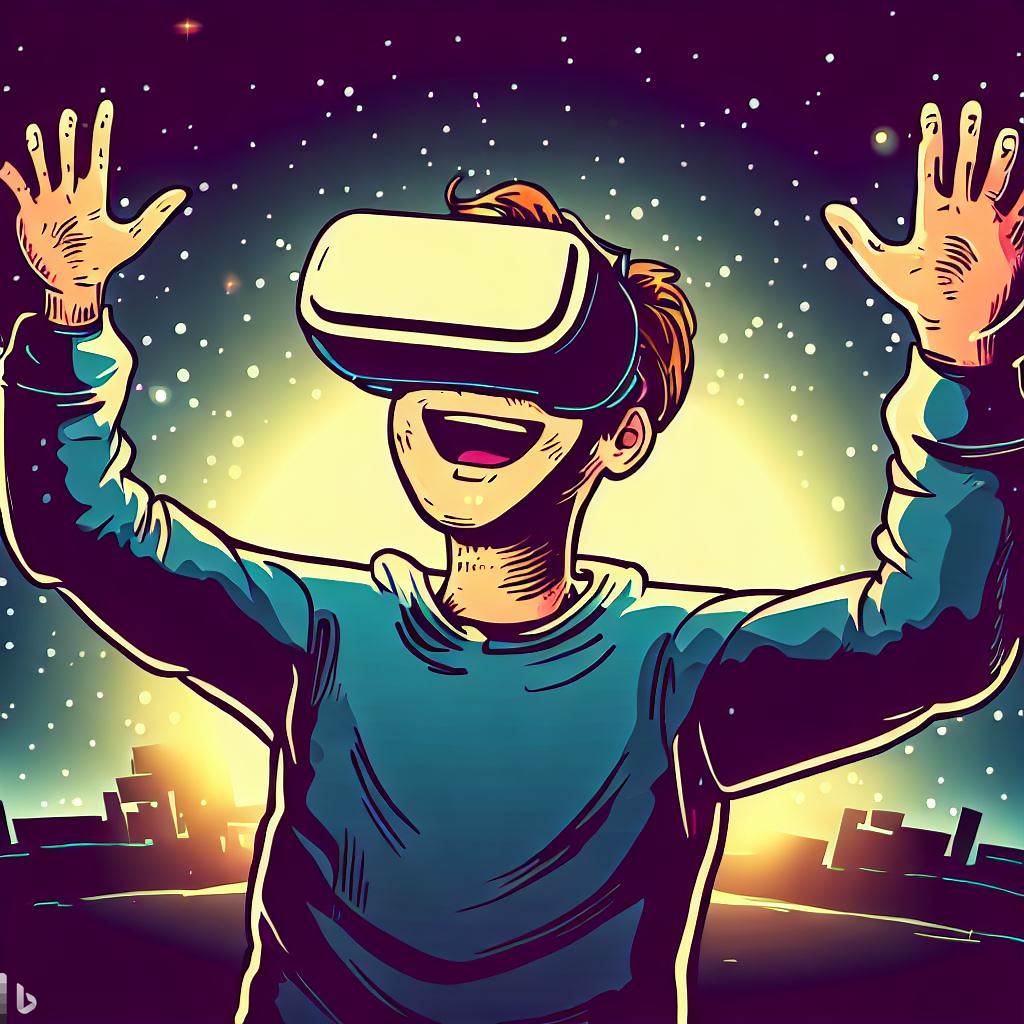
As we peer into the crystal ball 🔮 and ponder the future of virtual reality, it’s essential to consider expert predictions, ongoing trends, and the seemingly endless possibilities that VR has to offer. In this section, we’ll explore various aspects of VR’s potential future, diving into the realms of innovation, adoption, and impact on society. Get ready for an exciting journey into the world of virtual reality! 🌌
🌟 Innovations on the Horizon
Technological advancements are constantly reshaping the VR landscape. Here are some exciting innovations that experts predict we’ll see in the coming years:
- Lighter, More Comfortable Headsets – As technology improves, we can expect VR headsets to become lighter, more comfortable, and easier to wear for extended periods.
- Higher Resolution Displays – The future of VR will likely feature even higher resolution displays, providing crisp, lifelike visuals that further enhance immersion.
- Improved Haptic Feedback – Haptic technology will continue to advance, with more sophisticated tactile sensations that mimic the feel of real-world objects and interactions.
- Eye-tracking and Foveated Rendering – Eye-tracking technology will enable foveated rendering, which optimizes graphics by only rendering high-quality visuals in the user’s direct line of sight, reducing the workload on the GPU.
- Advanced AI and Machine Learning – AI and machine learning will play an increasingly significant role in VR experiences, enabling more realistic interactions with virtual characters and environments.
🌍 Widespread Adoption and Mainstream Appeal
As VR technology continues to evolve and become more accessible, experts predict that the industry will experience rapid growth and widespread adoption. Here are some factors that could contribute to VR’s mainstream appeal:
- Affordability – As hardware becomes more cost-effective, VR devices will likely become more affordable, reaching a broader audience.
- Content Diversity – A growing library of diverse content and applications will cater to various interests and demographics, further driving adoption.
- Social Experiences – Enhanced social experiences in VR will connect people across the globe, fostering new friendships and communities within the virtual space.
- Integration with Other Technologies – The convergence of VR with other emerging technologies, such as augmented reality (AR) and the Internet of Things (IoT), will create new and innovative experiences that have the potential to captivate users.
🚀 The Impact of VR on Society
The potential impact of virtual reality on society is vast, with the technology poised to revolutionize multiple aspects of our lives. Let’s take a glimpse at some possible scenarios:
- Remote Work and Collaboration – As remote work becomes more prevalent, VR will likely play a critical role in facilitating virtual offices and collaborative environments, enabling more effective communication and teamwork.
- Education and Training – VR has the potential to transform education, offering immersive and engaging learning experiences that cater to different learning styles and preferences.
- Healthcare and Wellbeing – From treating phobias to providing physical therapy, VR will likely play an increasingly significant role in healthcare, offering innovative treatment options and improving patient outcomes.
- Travel and Exploration – VR will enable virtual travel experiences, allowing users to explore the world without ever leaving their homes, which could have a profound impact on the tourism industry and our understanding of other cultures.
- Environmental Impact – By offering virtual alternatives to various activities, such as commuting to work or traveling for leisure, VR could help reduce our carbon footprint and contribute to a more sustainable future.
✨ In Conclusion: The future of virtual reality is undeniably exciting, filled with endless possibilities and the potential to transform our lives in unimaginable ways. As innovations continue
Conclusion
Our exploration into the past, present, and future of virtual reality has taken us on a thrilling ride through the ever-evolving landscape of this groundbreaking technology. From its humble beginnings as a science fiction concept to its current status as an industry on the cusp of mainstream adoption, VR has come a long way.
Addressing the challenges and harnessing the power of investment, the VR industry is poised to grow at an unprecedented rate. Experts predict a future filled with remarkable innovations, widespread adoption, and a profound impact on society as we know it.
So, will virtual reality finally take off? All signs point to a resounding “yes.” As technology continues to advance, hardware becomes more accessible, and diverse content and applications emerge, the stars are aligning for VR to skyrocket and become an integral part of our everyday lives.
The virtual revolution is just around the corner, and we can’t wait to see what amazing experiences and transformative applications await us in this brave new world. 🚀

